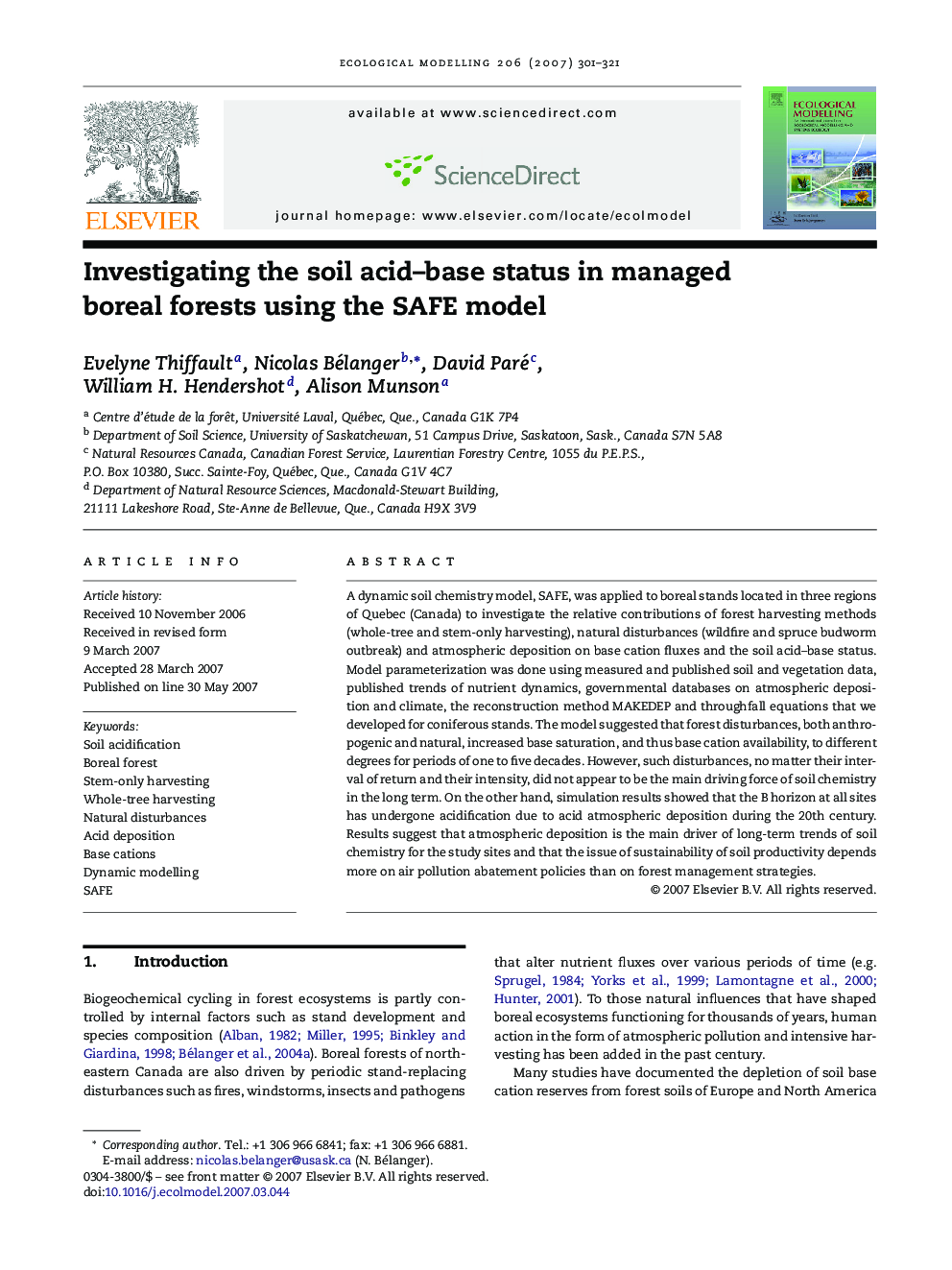| Article ID | Journal | Published Year | Pages | File Type |
|---|---|---|---|---|
| 4378644 | Ecological Modelling | 2007 | 21 Pages |
A dynamic soil chemistry model, SAFE, was applied to boreal stands located in three regions of Quebec (Canada) to investigate the relative contributions of forest harvesting methods (whole-tree and stem-only harvesting), natural disturbances (wildfire and spruce budworm outbreak) and atmospheric deposition on base cation fluxes and the soil acid–base status. Model parameterization was done using measured and published soil and vegetation data, published trends of nutrient dynamics, governmental databases on atmospheric deposition and climate, the reconstruction method MAKEDEP and throughfall equations that we developed for coniferous stands. The model suggested that forest disturbances, both anthropogenic and natural, increased base saturation, and thus base cation availability, to different degrees for periods of one to five decades. However, such disturbances, no matter their interval of return and their intensity, did not appear to be the main driving force of soil chemistry in the long term. On the other hand, simulation results showed that the B horizon at all sites has undergone acidification due to acid atmospheric deposition during the 20th century. Results suggest that atmospheric deposition is the main driver of long-term trends of soil chemistry for the study sites and that the issue of sustainability of soil productivity depends more on air pollution abatement policies than on forest management strategies.
